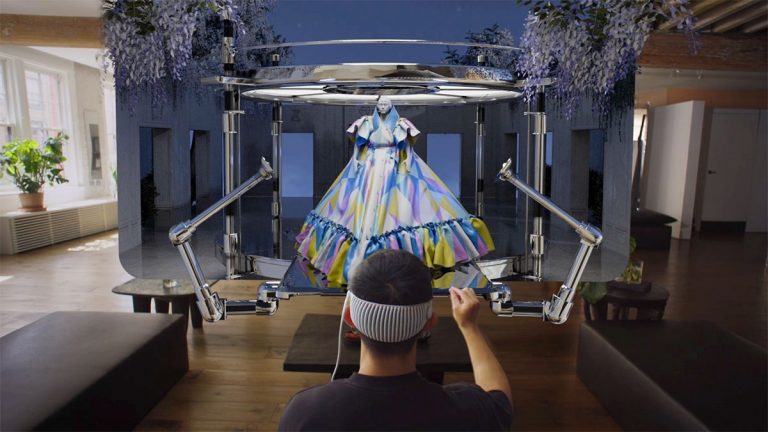The appeal of the $3,500 device, which may be followed by a more affordable version next year, will depend on the quality of the content, Delahunt said, in the same way that the success of the iPhone depended on the adoption of its app store.
At the same time, mainstream interest in metaverse fashion and NFTs is fading (Syky primarily sells digital fashion as NFTs, and often also sells physical counterparts), and brands’ participation in digital fashion is pivoting primarily to gaming, while innovation budgets are shifting from the fantasy to the practical, often viewed through the lens of how artificial intelligence can create efficiencies behind the scenes for customers.
Because Syky was built with spatial computing in mind, it makes sense for it to build on AVP early on, especially since Syky users overlap with AVP owners (Apple typically works closely with companies developing first-of-its-kind apps for Vision Pro). Traditional luxury brands and retailers hope to attract new, tech-savvy, affluent customers through the device, but Syky’s user base is already more closely aligned with AVP’s, and digital fashion collectors are likely to also be advocates of mixed reality. This overlap could be to Syky’s advantage, but it could also mean it’s preaching to the sympathizers and a challenge in expanding the digital fashion user base into the mainstream.
While this is the first digital fashion native to come to the device, early adopters from traditional fashion, beauty and retail are also getting in on the action: Elf Beauty, Alo, J.Crew and MyTheresa have all opened virtual stores in partnership with virtual store technology company Obsess. Gucci unveiled an embellished version of a short film introducing new creative director Sabato de Sarno, and Balenciaga just launched an app featuring fashion shows and playlists.
So far, most augmented and virtual reality experiences have been plagued by software issues, physical comfort challenges and sometimes disappointing content, which have acted as a barrier to mass consumer adoption, said Molly Burke, senior retail analyst at consulting firm Software Advice. Burke added that being able to shop and be inspired by brands in an immersive way that goes beyond what can be experienced on existing digital platforms could help, as could a more personalized shopping experience. “If brands want consumers to shell out for virtual reality hardware, they’re going to have to offer more.”


